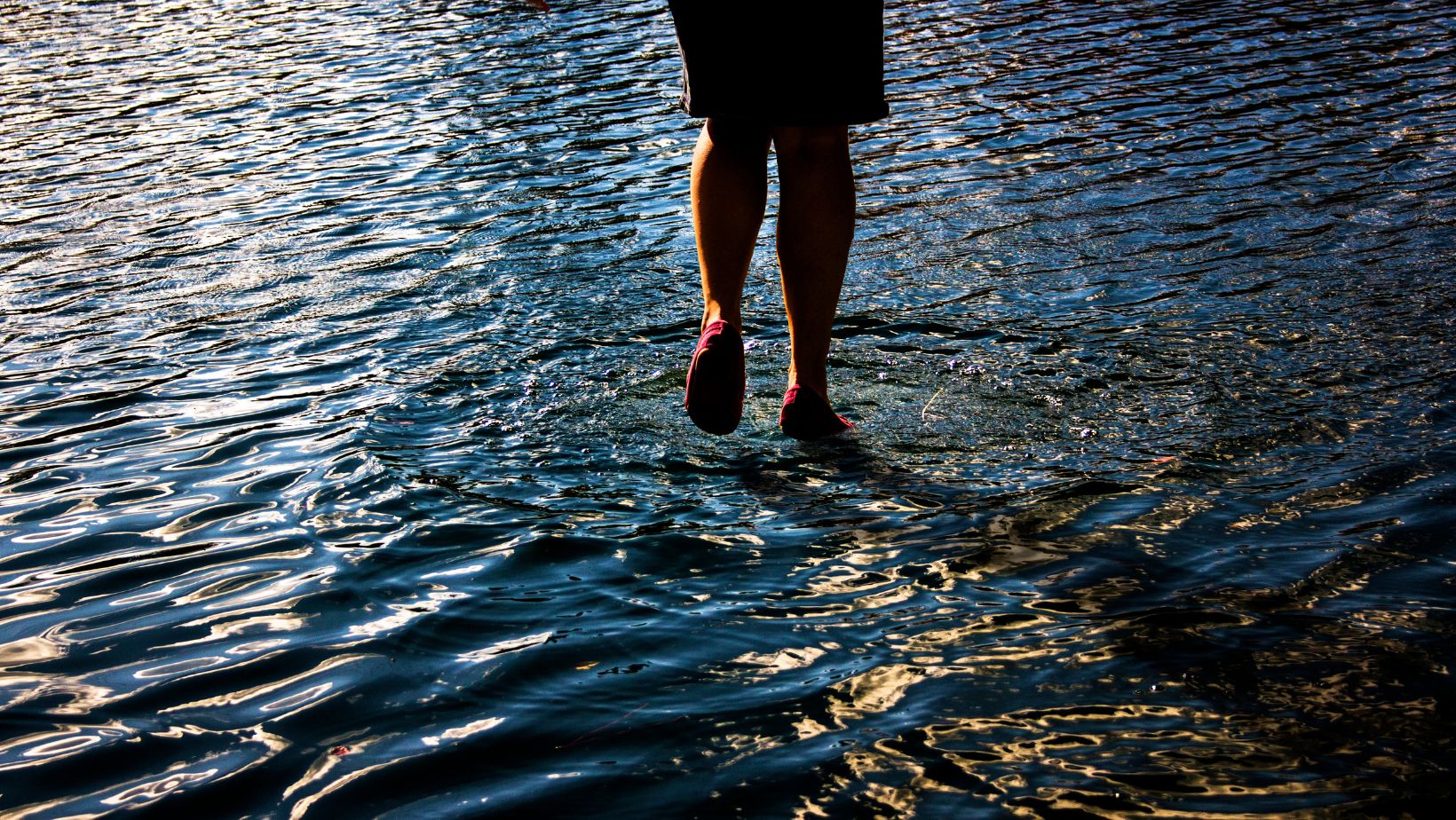How Fast Do You Have to Be to Run on Water: Revealing The Myth

How Fast Do You Have to Be to Run on Water
When it comes to the idea of running on water, one can’t help but wonder just how fast you would need to be to achieve such a feat. It seems like something straight out of a superhero movie or a mythological tale. But could it actually be possible? Let’s dive into the science behind this extraordinary concept and see if we can find some answers.
Firstly, it’s important to understand that running on water defies the laws of physics as we know them. The surface tension of water makes it incredibly difficult for any solid object – including humans – to stay afloat, let alone run on its surface. However, there have been reports of certain animals like basilisk lizards and insects like water striders that seemingly defy these limitations.
To potentially run on water, one would need an incredible combination of speed, agility, and technique. Research suggests that in order to achieve this seemingly impossible feat, a human would need to reach speeds upwards of 30 meters per second (67 miles per hour) with well-timed strides and precise foot placement. This kind of speed is far beyond what most humans are capable of achieving.
The Science of Running on Water
The Physics Behind Running on Water
Running on water may sound like something out of a superhero movie, but there is actually a scientific explanation behind this incredible feat. It all comes down to the concept of surface tension and the interaction between our bodies and the water molecules.
When we run on solid ground, our feet push against the surface, creating friction that propels us forward. However, when it comes to running on water, things work a little differently. The key lies in distributing our weight over a larger area to minimize sinking.
As we move across the water’s surface, our strides need to be quick and light. By increasing the speed at which we move our legs and minimizing contact time with each step, we can effectively create enough upward force to counteract gravity and avoid sinking into the water.
Factors Affecting the Ability to Run on Water
While running on water may seem like an extraordinary ability, not everyone can achieve it easily. Various factors come into play when determining whether someone can successfully run on water or not.
One crucial factor is body size and weight distribution. Lighter individuals with more evenly distributed weight have a better chance of staying afloat while running on water compared to those who are heavier or have concentrated weight in specific areas.
Another critical aspect is speed. To stay above the surface, runners need to reach specific velocities known as “minimum speeds.” These minimum speeds vary depending on factors such as stride length, leg muscle strength, and technique.
Additionally, environmental factors can affect one’s ability to run on water. Variables like temperature (warmer waters provide more buoyancy), salinity (saltwater offers greater density), and even footwear (shoes designed for traction) can impact performance.

Water Walking: A Myth or Reality?
When it comes to the idea of walking on water, many of us may think of biblical stories or legendary tales. However, is this phenomenon just a myth or could it actually be a reality? Let’s explore the concept of water walking and see if there’s any scientific basis behind it.
- Surface Tension and Water Striders: One creature that seems to defy gravity and effortlessly glide across the water’s surface is the water strider. These small insects are equipped with unique adaptations that allow them to walk on water. They make use of surface tension, which is the cohesive force between water molecules that creates a sort of “skin” on its surface.
- The Need for Speed: To walk on water, one would need to generate enough speed and momentum to overcome the force pulling them downwards – gravity. The key lies in achieving high velocity while distributing body weight over a large area, thus reducing pressure exerted on the liquid surface.
- Human Limitations: Unfortunately, despite our best efforts, humans do not possess the required physical attributes to achieve water walking like those nimble insects we mentioned earlier. Our bodies are much denser than that of a water strider, making it nearly impossible for us to stay afloat solely through surface tension.
In conclusion, while water walking may be an intriguing concept, it remains a myth for humans. Nevertheless, we can still find ways to experience the thrill of gliding across the water’s surface through alternative means. So grab your gear and dive into the world of aquatic adventures!




